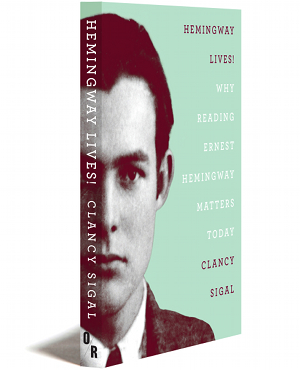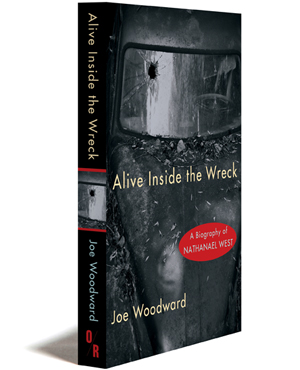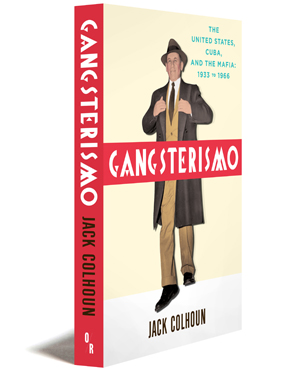
Hemingway Lives!
Why Reading Ernest Hemingway Matters Today
"Because I love Italy and write novels about it, I am fascinated by Clancy Sigal's compelling take on Hemingway's Italian-set fiction such as his great Farewell to Arms and short stories like 'Che Ti Dice La Patria' and 'In Another Country.'" —Sarah Dunant
"A gem! A lively, much-needed defense of Hemingway in this Fitzgerald-besotted days, a great read…" —Elaine Showalter
"The best take on Hemingway and women I’ve ever read." —Barbara Probst Solomon
"I treasure Hemingway Lives! ... I've been carrying it everywhere ... It's brilliant. I keep losing my place then doubling back because I really don't want it to end and I dread the loneliness of that oncoming shot." —Stewart Stern, screenwriter of Rebel Without a Cause
"Sigal ... writes with pizzazz and sensitivity." —from Booklist's starred review of A Woman of Uncertain Character
"There hasn't been anything like it since Grapes of Wrath." —from the San Francisco Chronicle review of Sigal's Going Away
TweetBuy This Book
|
Paperback: $18/£12
|
E-book: $10/£7
|
Print + E-book: $22/£14
|
About the Book
With the release of a flurry of feature and TV films about his life and work, and the publication of new books looking at his correspondence, his boat and even his favorite cocktails, Ernest Hemingway is once again center stage of contemporary culture. There’s something about Papa that makes any retirement to the wings only fleeting.
Now, in this concise and sparkling account of the life and work of America’s most storied writer, Clancy Sigal, himself a National Book Award runner-up, presents a persuasive case for the relevance of Ernest Hemingway to readers today.
Sigal breaks new ground in celebrating Hemingway’s passionate and unapologetic political partisanship, his stunningly concise, no-frills writing style, and an attitude to sex and sexuality much more nuanced than he is traditionally credited with. Simply for the pleasure provided by a consummate story teller, Hemingway is as much a must-read author as ever.
Though Hemingway Lives! will provide plenty that’s new for those already familiar with Papa’s oeuvre, including substantial forays into his political commitments, the women in his life, and the astonishing range of his short stories, it assumes no prior knowledge of his work. Those venturing into Hemingway’s writing for the first time will find in Sigal an inspirational and erudite guide.
Publication July 2013 • 238 pages
Paperback ISBN 978-1-939293-17-6 • E-book ISBN 978-1-939293-18-3
About the Author
 |
Clancy Sigal, a PEN Lifetime Achievement Award winner, is the author of Weekend in Dinlock, Going Away (a National Book Award runner-up), Zone of the Interior, The Secret Defector, A Woman of Uncertain Character, Black Sunset and The London Lover. He co-wrote the 2002 feature film Frida, starring Salma Hayek and Alfred Molina and had a writing credit on the Richard Attenborough directed film, In Love and War. |
Read an Excerpt
HIS WOUND… AND THE BOW
“Never think that war, no matter how necessary, nor how justified, is not a crime. Ask the infantry and the dead.” —Hemingway’s introduction to the book Treasury for the Free World
The literary critic Edmund Wilson was the first American reviewer to “get” Hemingway because he understood the impact of Ernest’s war trauma on his writing. Wilson’s theory of “the wound and the bow” was taken from Sophocles’ play Philoctotes, about a famed Greek archer whose painful wound served not to weaken but strengthen his bow. Wilson posited that neurosis (the wound) was indispensable to great art (the bow). You don’t have to be maimed to write—but sometimes it helps. In his second novel, A Farewell to Arms, Hemingway put it this way, “The world breaks everyone and afterward many are strong at the broken places…”
That is, if you survive. Which Ernest almost didn’t.
Drivers for the volunteer Ambulance Service in the Great War were vital to evacuate the bleeding wounded and dead in an ambulance often under deadly fire. Six hundred thousand Italian soldiers already had been killed in the fighting on a front that was considered a mere sideshow to the trench warfare in France.
But Ernest didn’t have to wait for battlefield action to handle dead and dismembered bodies. As soon as he stepped off the train in Milan, Italy an ammunition plant exploded and he was sent to help pick up the shredded lumps of Italian corpses, many of them women workers. For a boy not yet out of his teens this baptism of blood and entrails must have been a tremendous shock.
When assigned to a rear echelon, Hemingway felt he wasn’t really involved in the war and so volunteered for canteen duty that would bring him closer to front-line fighting. His relatively safe-seeming job was to distribute candy and cigarettes to Italian soldiers facing dug-in Austrian allies of the German enemy.
Six days before his nineteenth birthday, outside the bombed-out village of Fossalta di Piave in the northern Italian Alpines, in the midst of a heavy combat between the teenage soldiers of Italy’s Fourth Army and attacking Austro-Hungarians, while Ernest was busy handing out goodies to the troops, he and several other soldiers were hit by a fourteen pound explosive shell from an enemy Minenwerfer or trench mortar. Knocked down and riddled with over two hundred shell fragments, he struggled to his feet and somehow managed to pick up a badly hurt Italian soldier, piggybacking him until knocked down again by Austrian machine gun bullets in his legs. Bleeding and half dead, he brought the wounded soldier to safety before collapsing.
As we’ll see, we owe much of Hemingway’s genius to that Minenwerfer shell. Again and again, in his autobiographical Nick Adams stories like “A Way You’ll Never Be,” “Big Two Heart River,” sections of A Farewell to Arms, and in private talks with friends, Hemingway pointed to his traumatic “death” at Fossalta.
In a letter home he recalled: “Then there was a flash, as when a blast-furnace door is swung open, and a roar that started white and went red.” The fictional Lt. Frederick Henry in A Farewell to Arms says,
“I tried to breathe but my breath would not come and I felt my self rush bodily out of myself and out and out and out and all the time bodily in the wind. I went out swiftly, all of myself, and I knew I was dead and that it had all been a mistake to think you just died. Then I floated, and instead of going on I felt myself slide back. I breathed and I was back.”
A friend visited Ernest in the Milan military hospital and wrote to Hemingway’s parents:
“The concussion of the explosion knocked him unconscious and buried him in earth. There was an Italian between Ernest and the shell. He was killed instantly, while another, standing a few feet away, had both his legs blown off. A third Italian was badly wounded and this one Ernest, after he had regained consciousness, picked up on his back and carried to the first aid dugout. He says he did not remember how he got there, nor that he carried the man, until the next day, when an Italian officer told him all about it and said that it had been voted to give him a valor medal for the act.”
Ernest woke up in hospital in time to hear the surgeons gathered around his torn body discuss in detached and clinical terms whether or not to amputate a leg that resembled “freshly ground hamburger steak.” Luckily, the Italian doctors decided to try to save it.
Commenting on this experience, years later in an anthology Men at War, Hemingway wrote:
“When you go to war as a boy you have a great illusion of immortality. Other people get killed; not you. … Then when you are badly wounded the first time you lose that illusion and you know it can happen to you. After being severely wounded two weeks before my nineteenth birthday I had a bad time until I figured out that nothing could happen to me that had not happened to all men before me. Whatever I had to do men had always done. If they had done it then I could do it too and the best thing was not to worry about it.”
Hemingway’s way to “not worry about it” was to expel the pain, or as he put it, “If something in life hurts you in life, use it in your writing.”
For the rest of his life, Hemingway carried a Minenwerfer fragment in his change purse as a lucky charm.
In the Media
Tablet, December 20th 2013
The Taylor Report, October 14th 2013
CounterPunch, August 2nd 2013
Publishers Weekly, July 29th 2013
CounterPunch, July 26th 2013
Flavorwire, July 11th 2013
Dazed Digital, April 23rd 2013





